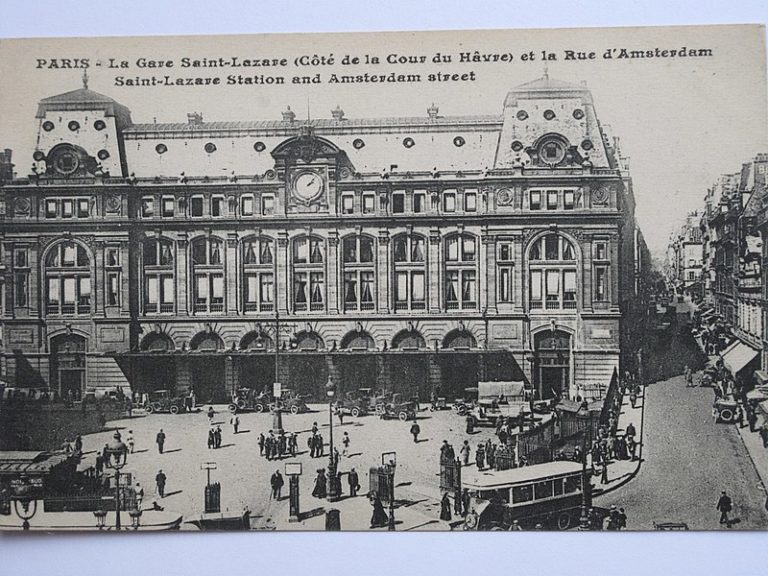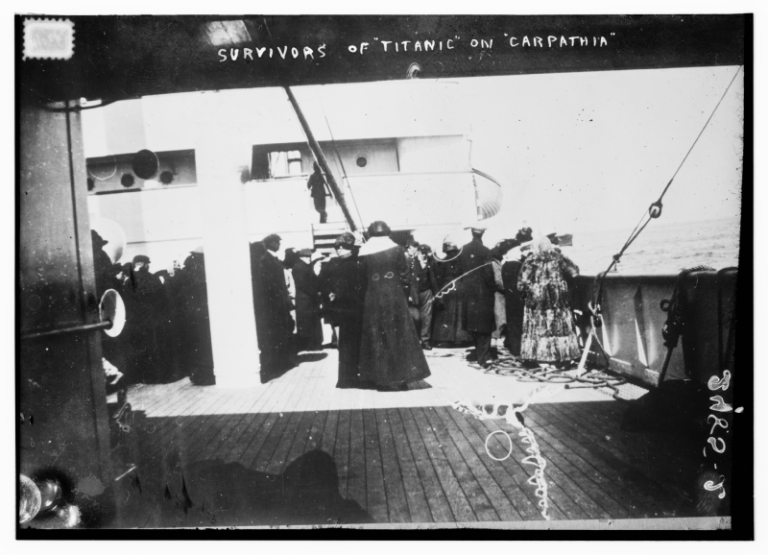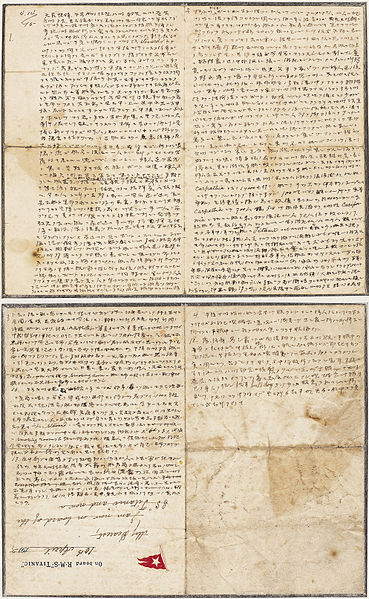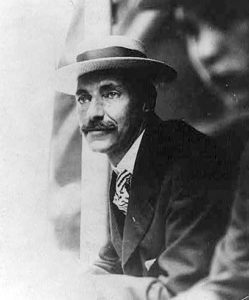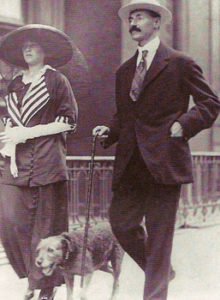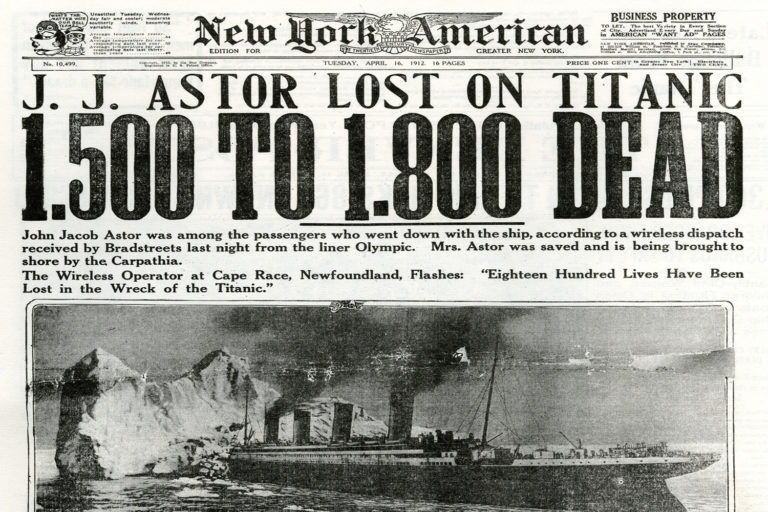“Just Like Little Canaries”: Victor & Maria Josefa Penasco
Victor Peñasco y Castellana, born October 24, 1887, was just 24 years old and newly wed when he boarded the RMS Titanic at Cherbourg.
Young Victor was kind and athletic. He was also spectacularly wealthy, and family to the minister of the King of Spain.
And on December 8, 1910, Victor married Maria Josefa Perez de Soto y Vallejo, an heiress who was two years his junior and affectionately called Pepita. Their combined affluence ballooned to obscene proportions.
By all accounts, the newlyweds were carefree, pretty, and very much in love.
Victor and Pepita spent almost two years on their honeymoon, leaving a trail of receipts for precious gemstones throughout Europe. Because Pepita loved herself some fancy jewelry.
While whiling away in Paris, they happened upon a flyer for Titanic's maiden voyage. They longed to extend their honeymoon a little further by going to New York, but Victor's mother, Purificacion, had forbidden ocean travel--it was a truth universally acknowledged that it was very bad luck on one's honeymoon.
So the Penascos had their butler, Eulogio, stay behind in Paris, and left him with a collection of pre-written postcards to be sent intermittently to Victor's superstitious mother, boasting of trips to Notre Dame Cathedral, the Palace of Versailles, and the opera.
Victor and Pepita then absconded to have some fun in New York and return in secret. Purificacion would be none the wiser.

Victor Penasco y Castellana.
The Penascos boarded Titanic with Pepita's maid, Fermina, on the evening of April 10, 1912. The party occupied stateroom C-65.
They were not the only Spanish passengers, but they were the only ones in First Class.
Reports vary as to the Penascos' fluency in English, but multiple sources say they spent most of their time speaking with their fellow Spanish-speaking passengers. And there would have been a number, particularly from Argentina and Mexico.
Victor at the very least must have been proficient in the English language, but historical accounts reflect that Pepita was not.
Regardless of any language barrier, Victor and Pepita were apparently the darlings of any First Class coterie that beheld them.
Survivor Helen Bishop said of them, "[Pepita] and her husband were just like little canaries... …They were so loving… and were having such a happy honeymoon that everyone on the Titanic became interested in them."
On the night of the collision, Victor and Pepita were readying themselves for bed. Fermina, Pepita’s maid, had stayed awake because Victor and Pepita were late returning from dinner. Working to mend a corset while waiting to tend to the couple, Fermina felt a jolt and a shudder.
She immediately alerted Victor and Pepita. Later, Pepita would attest that the impact was so faintly felt that not a drop had spilled from a bedside glass of milk.
Victor dressed himself and left to seem information from officers. Met with the grim news, he hurried to collect Pepita and Fermina.
Victor outfitted his wife and Fermina with lifebelts and hurried to escort them to the boat deck.
Victor the ladies into the care of Second Officer Charles Lightoller, who was preparing to lower in Lifeboat 8.
It became a vessel well-known as the site of multiple lovelorn declarations that occurred that night--in particular, that of Isidor and Ida Straus.

Isidor & Ida Straus, who lost their lives in the Titanic disaster and remain its most famous love story.
Rumor has it that Victor dashed back below deck for his wife's famed jewels. When he returned, he implored Pepita to get into the lifeboat, but in tears, she refused.
Speaking Spanish, in the midst of heartbreak and chaos, no one understood the exact words of their desperate exchange.
But the Countess of Rothes did try.
The Countess's cousin, Gladys Cherry, recalled the Penascos parting as a "terrible scene."
As patience in the waiting lifeboat wore thin, the Countess gently interceded in French, which she recalled in her letter to Walter Lord, the author of "A Night to Remember."
Pepita was no less inconsolable for the Countess’s polite intervention. Finally, according to Gladys, Victor "threw [Pepita] in our arms and asked us to take care of her."
There is the occasional report that Victor was last spotted on the boat deck, taking to his knees in prayer.
But he was never seen again.
Pepita wailed and wailed for him as the boat descended and pushed away from Titanic.
The Countess of Rothes described her time with Pepita in heartrending detail in the April 21, 1912, issue of the New York Herald.
Then Signora de Satode Penasco began to scream for her husband. It was too horrible. I left the tiller to my cousin and slipped down beside her to be of what comfort I could. Poor woman! Her sobs tore our hearts and her moans were unspeakable in their sadness.
As the darkness bore down and the women rowed Lifeboat 8, the Countess of Rothes continued to try to comfort Pepita, who was beside herself with grief.
When the awful end came, I tried my best to keep the Spanish woman from hearing the agonizing sound of distress. They seemed to continue forever, although it could not have been more than ten minutes until the silence of a lonely sea dropped down. The indescribable loneliness, the ghastliness of our feelings never can be told.
When the rescue ship Carpathia deposited the survivors in New York, Victor's mother had no idea her son and daughter-in-law had sailed, let alone that her son had died.
It's said she found out via a Madrid newspaper, and was as baffled as she was heartbroken. How could it be true, when she'd been receiving her son's postcards from Paris all along?

A suit owned by Victor Penasco y Castellana. Courtesy of Titanic: The Exhibition, New York City, 2022.
© soliloquism
Soon, the bereft family of Victor Penasco was soon faced with financial dilemma on top of the tragedy of his loss.
Contemporary Spanish law dictated that even though Pepita was legally widowed, she could not inherit Victor's fortune.
This was because without a body as proof of death, Victor could not be declared deceased for 20 years.
So unless Victor’s remains were found, their combined downries eould remain bound and untouchable in a savings account.
Figuratively cornered by the law, the family made an unusual choice: they bribed someone.
According to descendants, Victor’s family supposedly bought an unnamed victim's corpse, Fermina then identified it as Victor, which was substance enough to issue the death certificate.
However it happened, the result was the same: Pepita, though grieving, was that much wealthier.
Pepita married again about 6 years later and had three children; Fermina continued to work for her through retirement.
Pepita died at the age of 83.
SOURCE MATERIAL
Brewster, Hugh. “Gilded Lives, Fatal Voyage: The Titanic’s First-Class Passengers and Their World.” Crown Publishers, New York, NY. 2012.
https://www.findagrave.com/memorial/18500355/v%C3%ADctor-peñasco_y_castellana
https://www.encyclopedia-titanica.org/titanic-the-countess-of-rothes-and-the-phantom-light.html
https://titanicexhibition.com/nyc/


